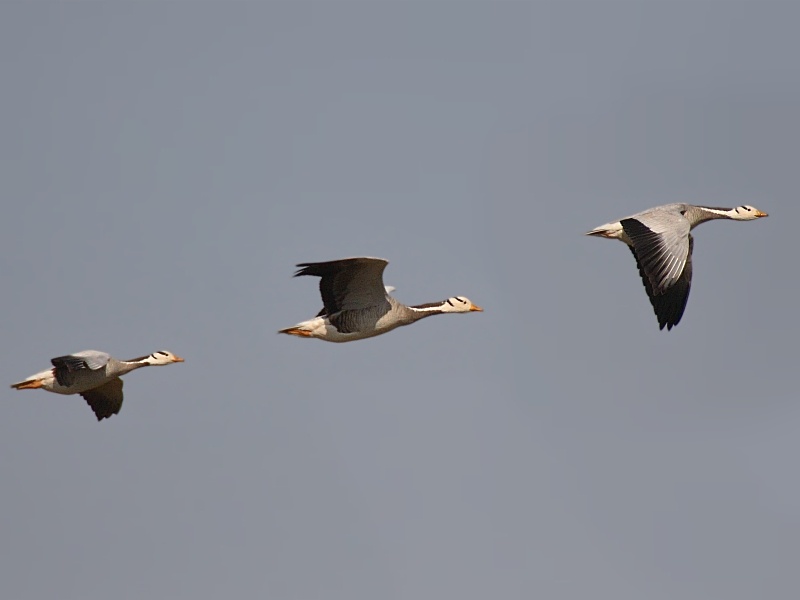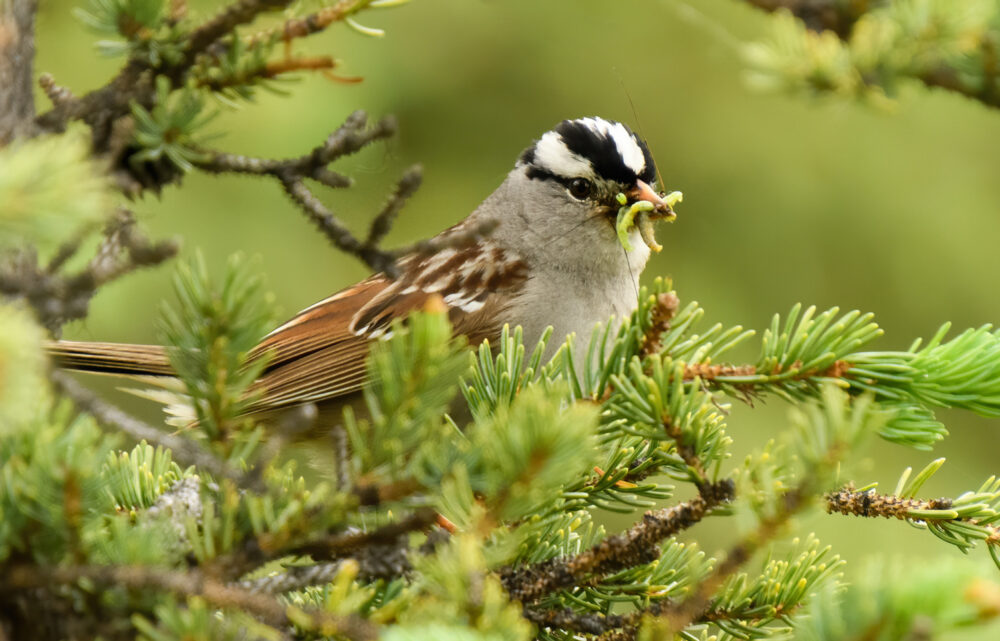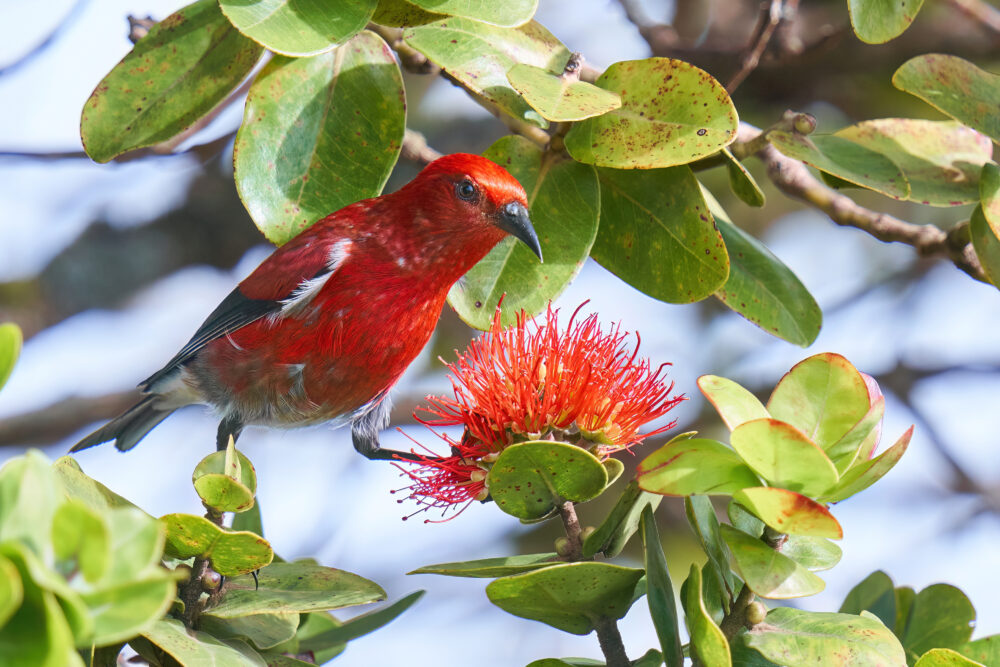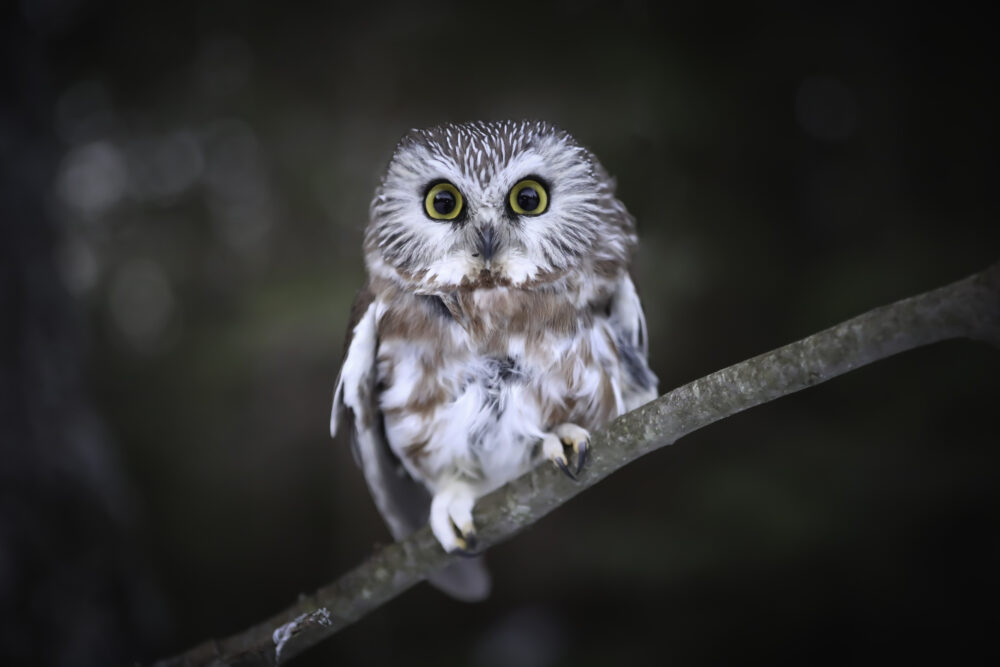We have much more to do and your continued support is needed now more than ever.
Adaptations To The Max — Wildlife At The Extremes of Altitude, Cold, Heat and Depth

But some creatures have made more extreme adaptations than seem physically possible. Here are a few examples.
The bar-headed goose migrates over the Himalayan mountain range – the world’s highest. To do this, they achieve heights higher than Mount Everest which is just shy of 30,000 feet. When these geese are flying nearly 6 miles up, they are in what mountain climbers calls the “dead zone” because the oxygen is impossibly thin and the temperatures are 40 degrees below zero. The good news is, however, that the geese can take advantage of the jet stream and a 100 mile per hour tail wind. A special mix of hemoglobin in their blood and an extraordinary tolerance for pain lets them complete the thousand mile trip in fine fashion.
Another high altitude adaptation is by sheer accident. Small spiders and aphids can get swept up from ground level in a windstorm and end up being carried four miles up where they can float, frozen solid, half way around the globe. A rainstorm or some other weather occurrence will eventually carry them back to earth where many will revive!
Some sizable animals are well adapted to the cold including whales, seals and penguins. But one surprising cold water dweller is the 12 foot long bluefin tuna. The bluefin spawns in the tropical waters of the Gulf of Mexico and the Mediterranean but its large size and calorie needs force it into colder waters where food fish are more abundant than in warmer regions. Their blood vessels are specially adapted to let them easily make this hot-to-cold transition.
There are amazing adaptations in desert environments too. The sand grouse of African deserts have an uncanny ability to find thousands of seeds in the sand, each day, that are blown in from distant places during storms. They also fly long distances from their nests to reach drinking water. The males of the species have specially adapted breast feathers that soak up water at the watering spot so they can carry it miles back to the nest and offer a vital drink to their thirsty young hatchlings.
Big ears seem to make a difference in the desert too and it is not just for better hearing. Desert hedgehogs, foxes and rabbits have large ears that act as panels for the cooling of their blood and bodies. The American jackrabbit is a prime example. Its ear-to-body ratio is amazingly efficient at cooling these animals living in ground temperatures sometimes in excess of 130 degrees.
The dorcas gazelle wins the prize for desert adaptation. It does not drink water at all. It gets all of its moisture by ingesting desert plants and it does not urinate. Instead it discharges small dry uric acid “pellets.”
Many close-to-ground environments are dangerously hot. This can be a problem for birds called plovers that, worldwide, lay their eggs directly on sandy beaches and dune areas. The crab plovers of the Persian Gulf lay their eggs on sand that gets so hot it would literally cook them. But these birds have adapted to the hot surface and dig deep holes where the cooler sand at the bottom is better suited to egg hatching.
Flamingos are well adapted to both heat and the exploitation of quite toxic salt lake sites. They feed on specialized algae that grow in salt (soda) lakes and they nest by building small islands in the middle of waters so caustic that predators will not venture into them. They build these nesting mounds high enough that the wind will not blow toxic salt-laden mist onto the eggs.

Learn more about how you can celebrate EXTRA-ordinary species during this year’s National Wildlife Week, March 19-25.





















